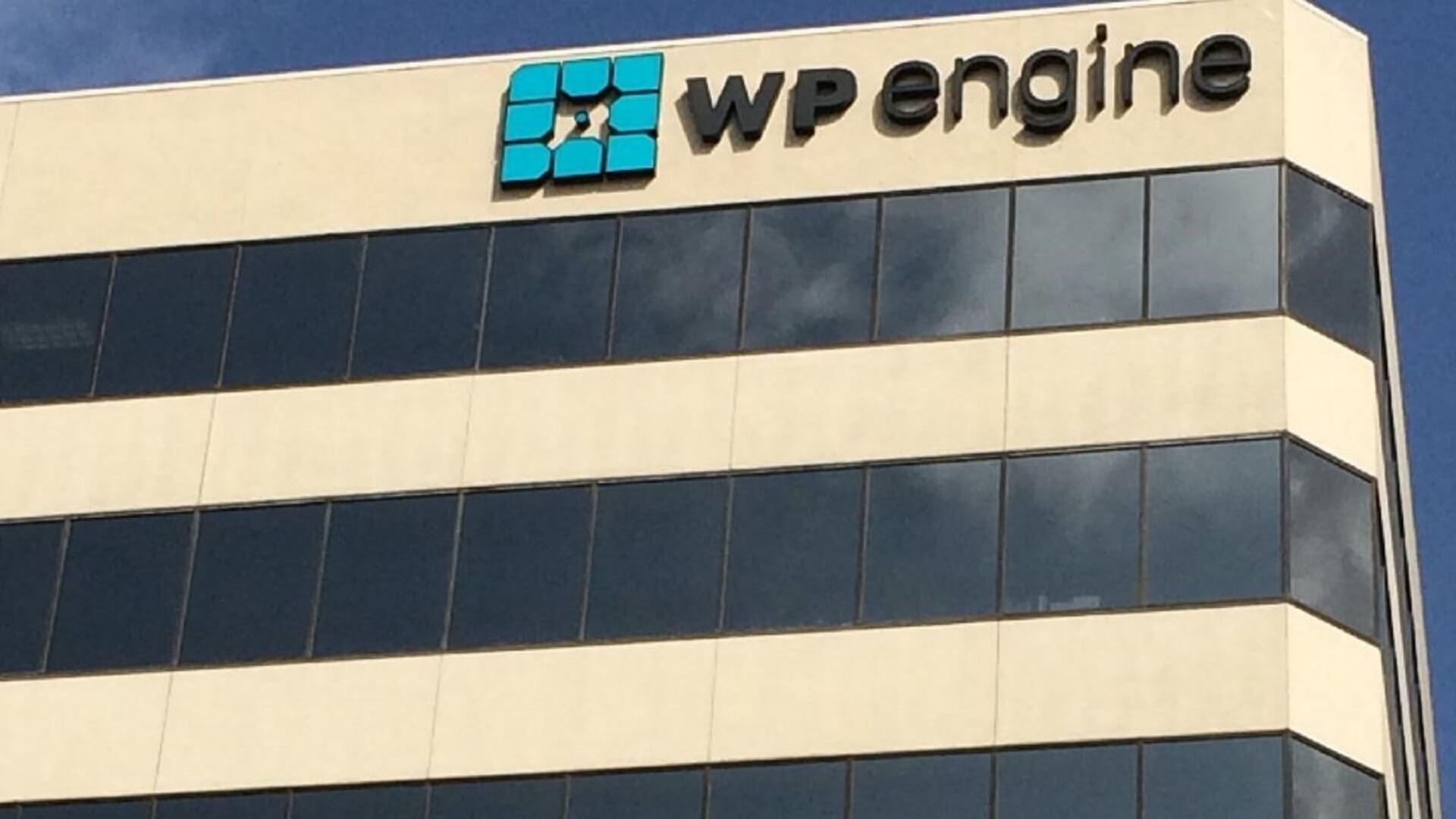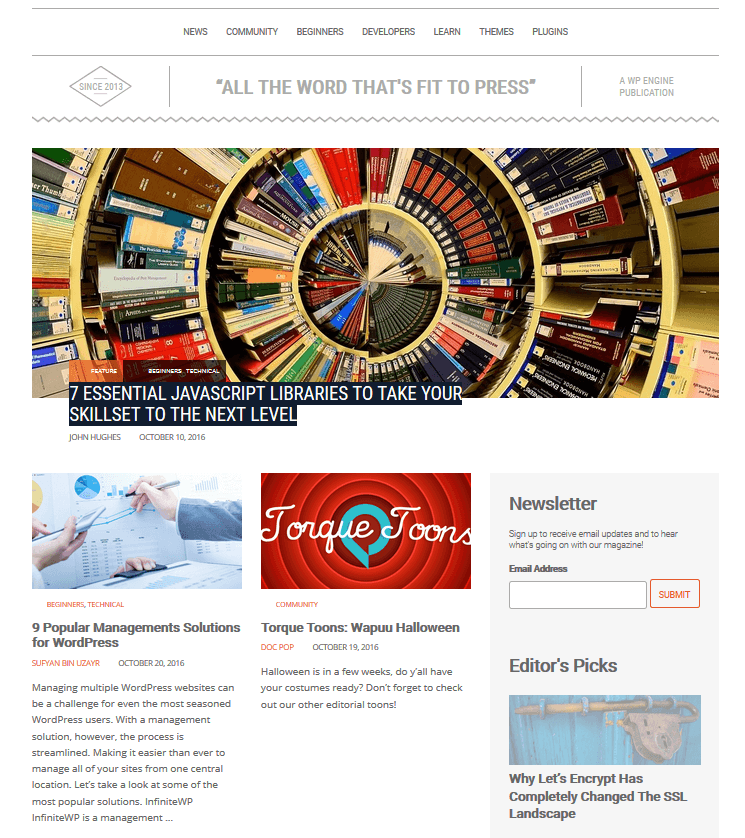
In March of this year, Mary Ellen Dugan joined WP Engine as CMO for the WordPress-focused website hosting platform.
In her role, Dugan oversees the brand’s global marketing, including brand and product marketing, demand generation and corporate communications. She says her vision for the company is to determine how to tell a better story through all communications.
“The opportunity for me, coming in and thinking about the marketing strategy, is how do we tell the story of a unique company that is partnering with 50,000 companies out there — brands, agencies, corporations across the globe — in helping them win online,” says Dugan.
Dugan says joining WP Engine afforded her the good fortune of being part of a company that is at the intersection of technology and service.
Today, Dugan was kind enough to talk to Marketing Land about her brand’s content marketing strategy, from where she sees it fitting to WP Engine’s overall marketing goals to how she believes content marketing will evolve in the coming years.

Takeaways:
1. A strong point of view is critical to cutting through the clutter.
2. When it comes to content, creating an emotional connection is not enough. An emotional interaction is what drives results.
3. Commit to being agile and publishing often and in real time.
4. Be confident! Don’t be afraid to try new things to stay ahead of trends.
Amy Gesenhues: Content marketing can encompass such a wide range of strategies, how does it fit into WP Engine’s overall marketing efforts?
Mary Ellen Dugan: For me, content marketing now has become kind of a strategic marketing approach, much like advertising or communications or PR, and it’s really a dedicated strategy, focused on creating. And then, how you’re distributing content that’s going to be relevant and valuable to whomever your customers are.
Content marketing, in the last few years, has become its own unique discipline and is continuing to evolve in its role in the marketing strategy, and the impact that it can play on the business.
How do we use it here? A couple of ways: in looking at where we are today, content is a huge component of WordPress in general. And so, as a company that’s focused there, we have the opportunity to showcase how we use content and how marketers can be really agile in creating content and distributing it.
I would say that we’re probably bucketed. The first thing we did was to look at what’s the customer journey — what do customers need to know about us at the awareness stage, at the consideration and beyond? If you were to bucket our content, it probably falls into three big areas.
One is around product. What is the product information and content information you need to know — whether you are not familiar with what we do, or if you’re a long-term partner of ours and you have a very evolved digital presence — that’s one area.
The second area is a focus on the industry — how is open-source, how are marketers, how are agencies using WordPress? How are they building their digital presence online? We do a lot around leadership in the industry, in general.
And then the third is business impact — how people are using their online presence to what kind of business is coming with that. Are they driving growth? Did they drive in leads?
On the industry side, we developed an online publication called “Torque” which is all around WordPress and open source. We cover things, some of which are done by WP Engine, but [the] majority are just done in the industry at large. We have a wide range of contributors that contribute to that platform, and so you might think of that as a softer version of unbranded content. While there is some of WP Engine, it really is an objective content marketing component.
I contrast that to more of our product things where we do videos, we create long-form content, short-form and social — and that is very much branded WP Engine.
AG: What about content distribution? How does your brand determine which channels are the best fit for content?
MED: Some of that is on our site; we are very heavy on social when it comes to the product use and what is happening out there.
Really reaching out to our communities, and then the business impact, I think you see us, not only on all the social platforms as well as our own, but probably at events where we are also distributing content.
AG: Can you tell me more about Torque?
MED: Torque was developed as a vehicle to WordPress being open source. You can think of it as a democratization of that CMS and that technology. Torque was really developed to support and to make sure that we were providing something that also contributed to the community.
If somebody comes out with a new product that’s not done by WP Engine, we’ll cover it. If there’s an industry view that is not something we did, we’ll cover it. By the same token, we will also cover WP Engine.

So, while it’s from our company, it really does operate autonomously. I mean, people do know it’s WP Engine, but we try to be very objective in everything we’re doing. Really, it is for the WordPress industry.
AG: Where have you seen the most engagement among your content marketing efforts? Is there anything that consistently outperforms other efforts?
MED: I think each of them have slightly different goals, right? The product content is to support our customers, and to have new customers make sure they understand what we offer. The industry one that we just talked about — Torque — has that role.
I think brands nowadays are trying to break through the noise. It’s not as if branded content is new; there was a study that marketers spent $10 billion in 2014 and up to $25 billion in 2019. I think all of us, as marketers, have to find a way — we’re all going to be doing content marketing. How do we break through?
One way we’ve started is the co-creation of content, and making sure our customers can participate. For us, we launched a new product a few months ago called Page Performance, and we created a campaign around WPE digital hero.
Join our Digital Hero family! Tweet a picture with your best hero pose and the #WPEDigitalHero hashtag https://t.co/yNlVzvuN5G
— WP Engine (@wpengine) June 16, 2016
This was all about reaching out to our developers and our agencies and asking them, how did this product make you a digital hero? How did it help in your performance? We have found that co-creation of content was really powerful for us.
We are certainly not the only ones who have done this. There’s a variety of examples of people that want their customer base to co-create with them. That’s one way we’re trying to break through the noise.
I would say that lends an authenticity to your content: you have your customers or your prospects weighing in on things. I feel like that — for us and for other marketers — is something that they are going to have to do a whole lot more with as we go through the next five years.
AG: How do you define the difference between multi-channel and omni-channel marketing in terms of a brand’s content marketing strategy?
MED: For me, the difference in the old world, multichannel was, I do a piece of content, and now I have to figure out what the short version is for social. I need to put it here, here and here. You are starting from a piece of content, and you are pushing it out into different channels.
I think the omnichannel approach starts from a totally different mindset. It starts with the customer experience, and it puts the customer first. So it’s not a piece of content or one corporate silo at the center. It’s what does the customer need? And then, mapping that out.
If this is our customer during a cross-awareness consideration, what are the pieces of content? What is the message we need to talk to them? And then, we go to what is the actual vehicle or platform? Is it going to go on social? Is it a video?
I think the omnichannel approach starts from the customer first, and the customer experience. As opposed to, multichannel starts with I have a piece of content and I need to push it out.
AG: Taking the omnichannel approach into e-commerce, how do you see e-commerce brands doing content marketing differently from brands not categorized as e-commerce?
MED: I would say e-commerce is certainly ahead of the game on omnichannel — and I think there’s data to back it up. There’s something like “increases conversions up to 70 percent” when somebody feels it’s a personalized e-commerce approach. We had another study recently — I think 56 percent of consumers said that they’d be more inclined to use a retailer if it offered a personalized approach.
I think e-commerce has nailed the omnichannel, and they really think about the entire experience of did I search on mobile? And, what’s the content here — then I go to a site, then I go to Facebook, etc.
What e-commerce has done — they’ve always talked about that customer journey, and that customer experience. Whether it’s a B2B or B2C marketer, taking a step back and saying, let’s think about what is that exact touch point? What is that journey throughout our customers? And then, what’s the content, and how is it served up?
I think you will see a lot more non e-commerce brands take on — they already have started — that mentality going forward.
AG: In a perfect content marketing world, please share your vision of how an omnichannel content marketing campaign would unfold from idea to final distribution.
MED: How this would play out in a perfect world is having a well-mapped-out customer experience, and picking one of those steps where we want to drive awareness: nobody knows who we are, but we really want to be seen as a thought-leader, or we really want to shake up the industry.
It would start from — what’s the goal? And then — what do our customers need to do, and what do we want them to do? Is there any call to action? For me, that’s how this starts to play out. What is the step in the customer journey that we’re trying to tackle? What is it that we think our customers need? What do we want them to do?
And then, the creative idea comes to play. I think being open-minded in a perfect world that says I want the most cutting-edge — whether it’s a video, whether it’s an infographic, whether it’s a long-form or short-form content. What is the one way or the “aha” moment of awareness that somebody else isn’t doing — create that.
I think you have to have the syndication of that — you have to push it out in as many places as you can. There was a study that 10 years ago, seven percent of people were using one social platform, and now it’s 65 percent are using multiple social platforms. So you’ve got to be in a lot of different places with your content.
And then, I think, the results are about what’s the key metrics? Are you trying to drive unaided awareness, or are you trying to drive visibility? You have to set that out.
That’s my perfect world: I’d start with the customer journey. I pick one step in it. I figure out how we do what’s needed. What we want them to do. What is the most creative way no one has done it before or most innovative — and then measure the results.
That is my scenario.
AG: Speaking of syndicating content, how do you direct your team to make sure that you’re doing more than simply pushing out the same piece of content marketing across multiple platforms?
MED: The challenge of syndicating content now is almost putting the influencer strategy on steroids. Communication has always talked about who are the influencers? Who do we wanna be in front of from a social perspective? I think now, you have to take that into your syndication.
There are lots of different ways — there’s content delivery networks you can use — Taboola or Outbrain. Those are paid, so you need to have paid; it’s not just an earned perspective.
Then there’s the social aspect of what are the networks that are either helping our community, or are seen as authoritative — and being conscious of that. Are you on LinkedIn or are you on Facebook? What’s your goal there, and how do you get in front of as many people that can reweet or send along? It’s the syndication of your influencers. Your influencers are helping you also to push that out further.
It’s a different way to think of syndication. You have to look at dissecting social in general. Are there specific communities that aggregate content for your communities — Reddit, Digg, etc. — that you can be a part of and you can contribute to?
Then you get into the general stuff of all the social media outlets — Facebook, Twitter, YouTube, Pinterest, Instagram — looking at a media strategy today, as part of this influencer strategy. Some are going to be paid, some are going to be earned. And then, you have your own — certainly on your site if you have it there.
It’s a pretty sophisticated job these days. And while it may have been “this side of the desk,” I don’t think it is any more; it’s just too competitive. There’s so much content out there. Getting it, syndicating it or getting it in front of your influencers is a whole strategy, and is hugely important.
AG: What are your biggest challenges when it comes to WP Engine’s content marketing efforts?
MED: Certainly one challenge we just talked about is, “OK, you made great content. How are you distributing it? How are you getting it out, and how are you doing it in a strategic way?”
I do think that’s an area that is a huge challenge for companies given the noise and getting lost — and you’re getting lost in the paid area, as well as the earned.
For me personally, 10 years ago, five years ago, it was all about what’s the emotional connection of your content, your advertising, your communication. All of us were driven to, “OK, you got to have that emotional connection with your customer base” — right? It’s not about the feature — it’s about the emotion.
I think the challenge now, in content marketing, is it’s no longer just an emotional connection. You need emotional interaction, and so it is taking that to the next level … You have to create a perspective and point of view with your content that is driving some emotion. Either to be passionate, to be committed to whatever emotion you’re trying to drive so that they interact with you and they engage and they take an action — because the whole point of content marketing is to obviously help you drive your business forward, whatever your KPI is. But you need someone to take an action with it.
I think the biggest challenge now is not just creating that emotional connection where somebody says, “I like that. That was clever.” It’s really about what’s the interaction you’re going to [drive]? And that’s lightning in a bottle sometimes — right? How do we make that so engaging for somebody?
For me, the creation side of it is that emotional interaction we need to get to. And then, once I have that, how do I get it in front of the right eyeballs?
AG: How do you see content marketing evolving as brands move forward into more channels?
MED: I think it’s going to continue to be a dominant need. The reason I personally feel that is the changing behavior of how people engage.
I mentioned that only seven percent had more than one social media they were using 10 years ago, now it’s 65 percent. People’s appetite and behavior for content is going to continue. Their expectations are going to rise much, much higher. They are going to want to feel it’s very personalized for what they want. The tolerance for very long form is not always going to be there — they want to know it is information they can get, and they want you to take them along their journey of, “OK, now I know who you are. I’m interested, maybe I want to buy something from you. Now I want to be a loyal supporter.”
The sophistication of content marketing is going to increase from the standpoint of how we view content. Look at the explosion of Snapchat and Instagram and all the other different vehicles, and that is content for many, many people. We have to be more open in what we put in the bucket of content — I see it as a critical need for marketers.
It’s one of the reasons that I’m so excited about WP Engine and WordPress, because it does allow a marketer to be really agile and put new content up on their site or publish it very, very quickly. And that, I think, is the other thing that is going to happen going forward — that it is much more disposable, it is quick. You need to get that content out there and be relevant.



